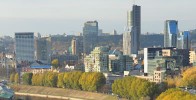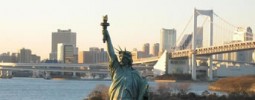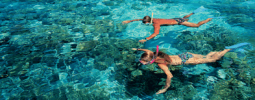Lithuania is a country in Northern Europe, the three Baltic States is the most southern. The Baltic Sea is located on the west side and beyond borders Latvia to the north, Belarus to the southeast, Poland and the Russian exclave Kaliningrad to the southwest. Its total area is 25,173 square miles and the capital and the largest city is Vilnius. Lithuania is divided into 10 provinces, which are named after their capitals.
The Lithuanian Republic is a parliamentary democracy, the president is directly elected by the people. Current President Dalia Grybauskaitė and Prime Minister Andrius Kubilius (2010). The post of president is mainly ceremonial and military commander-in-chief, foreign affairs and national security are also important features.
Vilnius is one of the two cultural capitals of Europe, it has a great historic downtown and is home to one of the oldest universities in this part of Europe. Vilnius has on the left bank of the Neris a maze of small streets and more than forty churches. This area is on the World Heritage List since 1994, the baroque is the dominant architecture. The oldest church in town is the Saint Nicholas church, this Gothic church was built in 1320 by German merchants.
In the tourist town Palūšė, the Aukstaitija National Park is the church of Palūšė , built in 1750, it is the oldest wooden church in Lithuania. The church was built without tools such as nails, saws, or axes, it is on the one litas banknote.
North of the city of Siauliai is the Hill of Crosses, a pilgrimage, whose exact origin is unknown. It is thought that the first crosses were placed on the hill fort Domantai after the uprising of 1831. Not only crosses but also carvings of Lithuanian patriots, big crucifixes, statues of the Virgin Mary and thousands of saints and rosaries are laid down by the years by Catholic pilgrims. The number of crosses is unknown, but estimates about 100,000.
Lithuanian cuisine uses a lot of dairy products and locally grown in the cool and moist northern climate such as barley, potatoes, rye, beets, greens, berries and mushrooms. Specialties are: Cepelanai are potato noodles, stuffed with cheese, meat or mushrooms. And Bandelai, a dish made with meat-filled cabbage rolls. Beer and vodka are the most popular alcoholic beverages in Lithuania.
Palanga is located in western Lithuania on the Baltic Sea and is a real tourist town. Palanga is famous for its white sandy beach, but also for its thermal and mineral baths, the pier, festivals and concerts. The beach drops off slowly into the water, making it safe for adults and children. The dunes are partly covered with pine trees. The botanical garden and the world’s largest amber museum are beautiful. The Palanga Amber Museum is housed in the restored 19th-century Tiškevičiai Palace. The museum’s collection of amber comprises thousands of pieces and a part contain inclusions of insects, spiders, or plants. The Amber Sun presented in the Amber museum, is a huge piece of amber it weighs about 7,74 pound. The botanical garden is a beautiful rose garden, greenhouse, a sculpture by Egle, the Queen of Serpents, a Holocaust memorial, there are also ponds and gazebos.
For residents of the countries in the European Union is no visa required for stays shorter than 90 days. Visitors from other countries can request a visa at the Embassy or Consulate.









